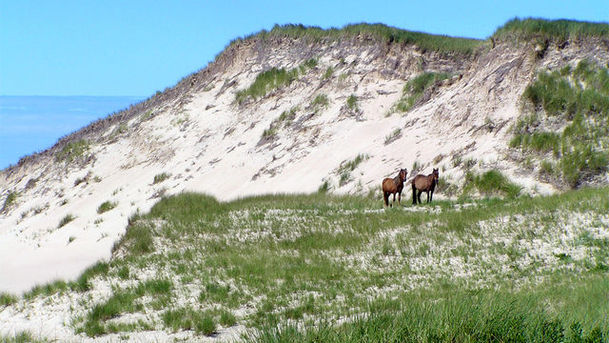Sable Island: A Dune Adrift

One hundred miles east of Nova Scotia lies a 30-mile-long sand dune, Sable Island. It has a population of just two, who work in the weather and research station, and is also home to 300 wild horses. Sean Street reveals how this remote place is providing information vital to us all, and how it has gained a powerful presence in the imagination. In the middle of the world's worst weather systems, held tentatively in place by ocean currents, Sable Island is the perfect place to monitor climate change, and air and sea pollution. More than 500 ships have been wrecked here. There have been several attempts at colonisation, by the Portuguese, the French (Sable is the French word for Sand) and even a group of prominent Bostonians, and all have failed. The story is cultural as well. Thomas Raddell, Nova Scotia's finest writer, was a radio operator on Sable for a year, and this inspired his novel The Nymph and the Lamp. The poet Elizabeth Bishop visited and wrote about the island. Sean examines wreckage from some of more than 500 ships that have come to grief on the island. There is poignant baby's crib made from wreck wood, there being no trees. At the Natural History Museum in Halifax, he witnesses the unpacking of the latest consignment of bones and specimens - extraordinary ancient walrus skulls - collected as they are exposed in storms by Zoe Lucas, who has been on the island for decades. Sean meets artist Roger Savage, who had to tie his easel down, clamp his paper and battle with the scouring sand as he captured the landscape of the place in his paintings. And he meets a man who dedicated years to studying the rare Ipswich Sparrow, which nests only on Sable Island. What emerges is that Sable Island is for the Canadians what the Galapagos are for the people of Ecuador, or Easter Island for Chileans. It is important scientifically and historically, but more than this it is important culturally, as part of their identity, even though hardly any of the Canadian population will ever go there. Indeed, because of concern about climate change and damage to a unique and fragile ecosystem, people are now anxious not to go there. Which is just as well, because getting to, and from, Sable is difficult, with there being no harbour or regular air service. The wind blows almost constantly, and there is often thick fog. Access is restricted by the Canadian government as well as by nature.